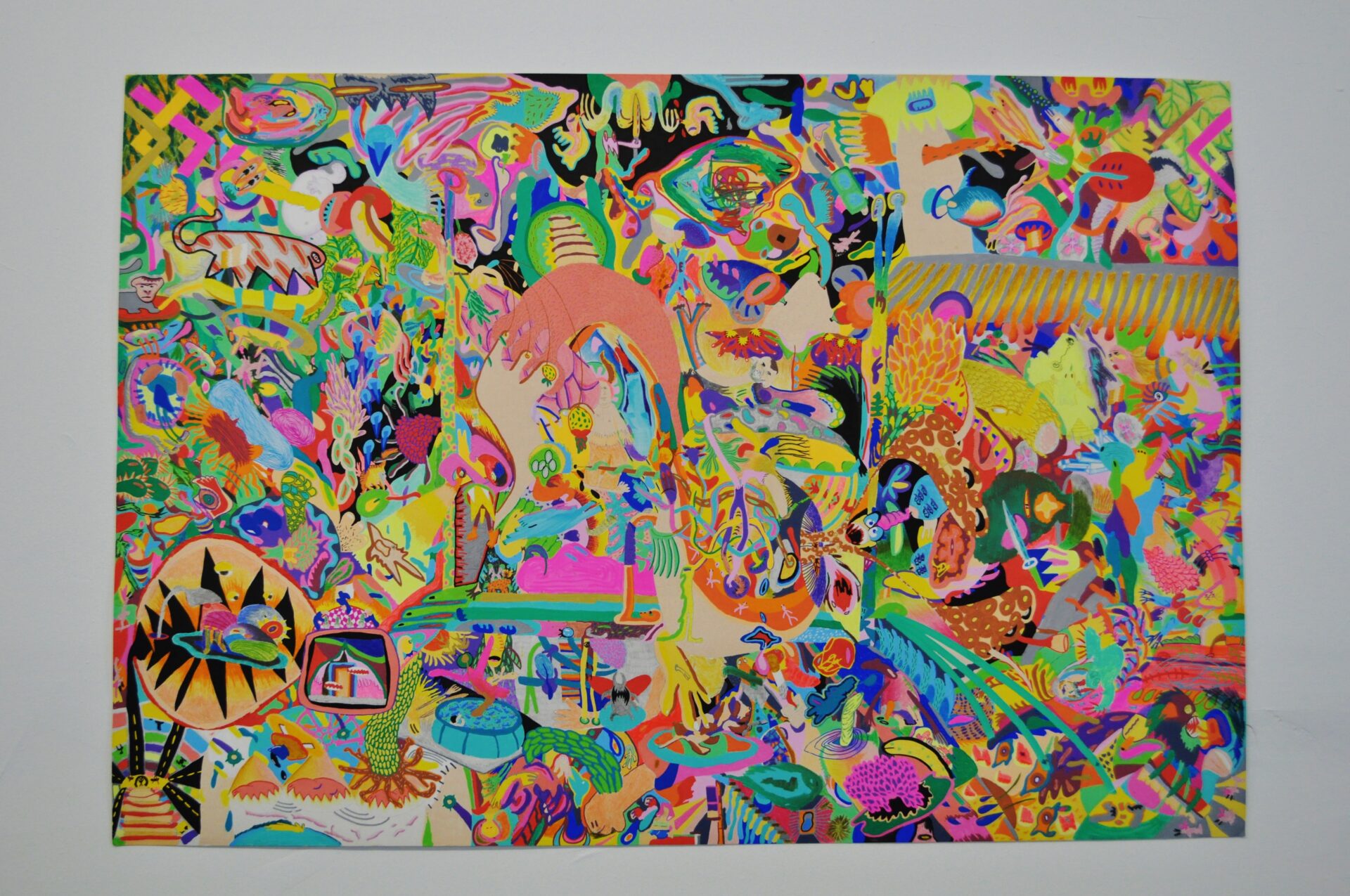
post-word: pre-history: anti-reason
starting a day’s work at Pivô Research
To arrive at eleven a.m. To press the buzzer, to announce myself, push the now unlocked metal door, close the door, go up the stairs. To be up at the studio at four past eleven. To drop my backpack on the floor, to look around the objects, coloring pens and drawings, to get a mug and go to the coffee area to make coffee.
To wait for the water to boil walking around in circles, lightly kicking the floor, the air, the walls. Maybe listening to music. Maybe not. To whistle. To get the brew the coffee. To take the mug full of coffee to the balcony, to sit on the bench placed against the wall, to cross my legs, to have a sip. To look at what is real. To perceive things with biased eyes, full of inescapable conceptions, but slightly lighter than later on, when many hours of lucidity will have left a trail of tiredness of memories and meanings. To perceive, for the time being, that reality is the formation of layers and events and left over objects. To perceive that reality has no true substance, it’s all layers. Buildings cut out by other buildings, a tree that pushes through two pieces of concrete, staircases, people going down staircases, people going somewhere, pigeons, shops, streets, sidewalks, dogs, clouds. Not to know what will come up in the drawing. To think that working on a drawing consists of picking from the inexistent some shadow of its fluidity and bring it up to existence. Possibly as a modified memory, maybe like a spirit that incorporates and conveys a cryptographic message. To think that drawing is a zone in which any interpretation, unreason, belief and madness can be exercised. To think that in the drawing the imposition of layers of forms and colors brought from the inexistent to the existent can, with a bit of luck, transform itself into impact or, even better, in awe, and the awe, in turn, may serve as a whisper about these forms which didn’t exist but are here now, and if they now exist it’s because they have already existed somewhere. To understand that the drawing is the tale of a trip between worlds. To accept that the gesture of the hand with the coloring pens on the paper is an exercise in which the non-material geometry communicates with our need to see it. To think of the drawing as proof of the materiality of the immaterial. Apparition. Geogliphs. Hieroglyphs. To realize that this images are more powerful than words. To understand, therefore, that although working in a drawing is similar to writing, in that the hand produces something which reveals and amplifies us, the drawing has the advantage of not using words, which are always thirsty for meaning, exhausted from clichés, from ironies, from inescapable ignorances, always eager to make a point and to convince. To think that the drawing extrapolates order. No words would be able to achieve that, as they are inevitably outworn in the moment of being received by the contemporary reader. To accept and celebrate that the drawing has no subject, verb or predicate, and that its frontiers are more subversive and point to the future, when no word will be necessary. And despite that to know that the drawing is a development from written language, whose support we are now about to abandon as obsolete. And this development takes place insofar as words reach their limit and becomes useless. They are a ladder we have climbed and now can be thrown away. To realize that there’s a transformation taking place in language and in the human need to say. That now it’s as if our historical development were a backwards reflexion of itself, a spiral at best, and that soon we’ll abandon the trust in words and their explaining and their relevance, and will again let ourselves be guides by scrawls on the walls, which are today’s caves, by shadows captured by cameras, shapes in space, photographs that erase themselves in seconds, videos that evaporate in twenty-four hours, drawings that get moldy, paints that fade, screens that crumble in terrorist attacks, installations that vanish in an earthquake. To stop. To give thinking a brake. To return to the eye which sees the world from that balcony, to notice that the coffee mug went empty while one was looking at the world from that balcony. To leave the balcony, to walk back into the studio. To know that the web which reaches into the future and brings the traces and colors to the drawing is called not exactly spirit, not exactly dream, not exactly talent, not exactly god, not exactly research, but, before anything else, imagination, a gift without authorship.
*Translation – Chico Guedes

 Português
Português